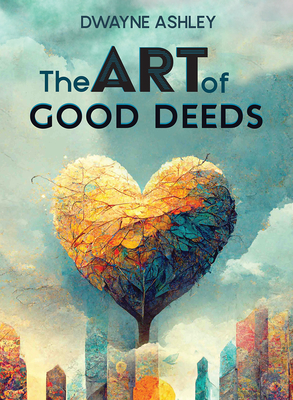Book Review: The Art of Good Deeds
Reviewed by:
Denolyn CarrollThe Oxford English Dictionary defines philanthropy as “the desire to promote the welfare of others, expressed especially by the generous donation of money to good causes.” If this book had the term philanthropy in its title, chances are the average person would not deem himself or herself qualified to make generous donations of money, and, therefore, would not give this work a second thought. (And they would have missed out big-time.) Instead, in the brilliantly titled The Art of Good Deeds, author Dwayne Ashley, with Ava Williams Muhammad, immediately draws readers to this little gem by touching on the core of goodness in most of us, our simply wanting to do “good deeds.” Then chapter by chapter, he deftly opens our hearts and minds to the numerous avenues and impacts in philanthropic giving.
From his introduction, Ashley, CEO and founder of Bridge Philanthropic Consulting LLC, makes his perspective clear: “Philanthropists wish to touch hearts and souls. They desire to make a difference, often because someone has made a difference in their lives.” He adds, “Pay attention to ways that you can give that do not require you to write a check to an organization,” for example, giving in service, giving back, giving of your time. In each of the twelve chapters that make up The Art of Good Deeds, notable philanthropists share real-life accounts of giving, highlighting how even the smallest act of kindness can have a ripple effect that often moves in generational cycles. Each entry is balanced by a section titled “Gifts to Self,” in which contributors share what they do for themselves to keep body and mind primed for philanthropy in its various iterations.
In “Charity Begins with Family,” Betty Aquino, raised in Harlem, New York, as the daughter of immigrant parents, asserts, “I was inspired to give by my family,” especially her grandmother, who taught her “you don’t have to be financially well off to give.” Aquino now teaches her children about philanthropy, emphasizing that they should “treat people as they would want to be treated and that good behavior comes in different forms.” Currently head of business development for Cartiga, a legal finance firm, she speaks of her commitment to teaching about financial literacy. “I thought it made sense to use my financial literacy knowledge to serve my community. I give back by guiding young professionals and through offering financial literacy to elementary students in East Harlem.” In addition, through her Women in Leadership Networking & Career Development Group, Aquino helps women attorneys solidify their roles, advancements, and partnerships in a “male-dominated space.” Yet, she maintains, “I give a lot, but I could give more.”
In “The Impact of Giving and Receiving,” Bob Carter, one of the world’s most respected, experienced, and recognized experts in the areas of institutional strategy and philanthropy, recounts a moving incident of “reciprocal philanthropy.” Over ten years ago, on his way to a meeting, he saw a beggar nearby and gave him a five-dollar bill. The man chased him down and gave him “a nylon bag with a set of fake pearl earrings in it.” Carter notes, “He said I was generous to him, so he wanted to be generous to me. He insisted that I take the earrings, so I took them.” Since then, Carter has taken the earrings with him on his travels. “The earrings reminded me,” he recalls, “that God is driving the reciprocal philanthropy that changes the world.”
For Latoya Henry, a marketing, public relations, and events executive, “Good deeds are teeny-tiny decisions. If someone is crying or looking distressed, and you ask how they are feeling—that is a good deed. I incorporate good deeds into my daily life.” Reggie Van Lee, chief transformation officer at the Carlyle Group, says his father helped him crystallize his legacy: “…Getting into a room that I’m not supposed to be in and bringing other people in the room who are not supposed to be there.” In “The Privilege of Giving Back and Mentoring,” Rustin M. Lewis, executive director of Communities in Schools of the Nation’s Capital, stresses the importance of empathy: “You have to understand that not everyone has the same situation… [We shouldn’t] look at the world solely through our own lens. Whether you’re in Jamaica or Egypt, we’re all on this planet together. Do your part; the village is on fire.”
Those are just some examples of what makes The Art of Good Deeds a good deed in itself. Additionally, as a collection of personal perspectives on and varied experiences in giving, it is refreshingly grounded in authenticity. The range of examples of philanthropy, from corporate-acknowledgment levels to life-changing-man-on-the-street moments, makes the work relatable and inspiring. Even the actual physical makeup of the book (overall size, simple yet effective sectioning, wide margins) makes for easy access to a compelling work. Readers will be moved to consider the ways they could be giving more from their particular storehouse of blessings.
On yet another level, The Art of Good Deeds is a timely offering in an increasingly debilitating me-centered culture. The village is indeed on fire! Through generosity, we can help douse the flames in our communities with love, empathy, kindness, hope—giving back and paying it forward, from one generation to the next.

